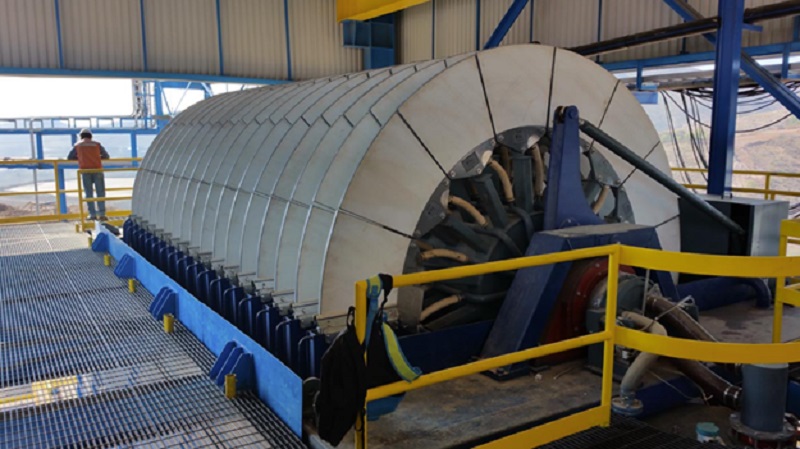In today’s mining operations, efficient water recovery and solid-liquid separation play an essential part in maintaining productivity and sustainability. Filtration systems not only help reduce waste but also enhance the overall efficiency of mineral processing. One of the most widely used tools in this domain is the mining disc filter, a solution that continues to evolve in response to operational demands. With growing environmental concerns and rising operational costs, choosing the right filtration system has never been more critical.
Disc filters are particularly popular in mining due to their ability to process high volumes while maintaining consistent filtration performance. Unlike conventional alternatives, they allow continuous operation and easy maintenance, making them a preferred choice across various mineral applications.
How a Mining Disc Filter Functions (Structure / Operation / Performance)
The working mechanism of a mining filter is deceptively simple, yet remarkably effective. It operates through a rotating drum fitted with a series of disc-shaped segments. As the unit rotates through a slurry tank, vacuum pressure draws liquid through the filter medium, leaving behind a solid cake on the disc surface. This cake is then mechanically or pneumatically removed before the disc re-enters the slurry for another cycle.
Thanks to this design, mining filters offer a compact solution for handling large volumes of slurry with minimal downtime. Their consistent performance, combined with low energy usage, makes them well-suited to the rigorous environment of mineral processing. Furthermore, the modular nature of disc filters allows for adjustments in filter size and number of discs to match specific operational needs.
Key Advantages—Why Mining Operations Depend on Disc Filters
The advantages of incorporating a mining disc filter into mineral processing setups are extensive. For one, these filters enable faster dewatering compared to traditional belt or plate filters. This leads to quicker cycle times, improved recovery rates, and better handling of fine particles often found in mining slurries.
Another important benefit is water recycling. By capturing more liquid and returning it to the system, disc filters contribute significantly to water conservation—a growing concern in many mining regions. Additionally, they often require less space and fewer resources to install and operate, translating into long-term savings.
The durability of these filters also plays a role in their continued popularity. With proper maintenance, they can withstand the abrasive nature of mining slurries and operate reliably for extended periods. This dependability ensures smoother day-to-day operations and fewer unexpected disruptions.
Innovations Driving the Evolution of Disc Filters
While the basic principles behind the mining disc filter remain unchanged, continuous innovation has enhanced its efficiency and lifespan. Manufacturers are now focusing on improved filter media, corrosion-resistant components, and intelligent automation systems to streamline operations further.
Modern disc filters often feature digital monitoring tools that help operators track performance, schedule maintenance, and detect inefficiencies before they become costly problems. These smart features allow for greater control, making it easier to adapt the system to different ore types and slurry conditions.
Energy efficiency has also seen considerable improvements. By optimising motor functions and reducing friction during rotation, new disc filter models can operate with lower energy consumption without compromising performance.
Maintenance / Troubleshooting / Operational Considerations
Even though mining disc filters are known for their reliability, routine care remains essential. Filter cloths need regular cleaning and timely replacement to maintain optimal throughput. Ensuring the vacuum pump functions properly and that the discharge mechanism is free from clogs can also make a significant difference.
Training personnel to understand the system’s cycle and basic troubleshooting can minimise downtime. When used alongside a monitoring system, even minor anomalies can be flagged early and addressed before they escalate.
Choosing the right filter size, configuration, and materials suited to the mineral being processed is vital. A poorly matched filter may underperform, cause unnecessary wear, or compromise final product quality. Therefore, aligning operational needs with system capabilities ensures the most effective and cost-efficient outcome.
A Balanced Investment for Long-Term Mining Efficiency
As environmental regulations tighten and efficiency expectations rise, the demand for reliable filtration continues to grow. A mining filter offers a balance between performance, longevity, and cost-effectiveness, making it an invaluable asset for any mining operation focused on sustainable growth.
This tool plays a pivotal role in managing slurry, enhancing solid recovery, and promoting water reuse, all while maintaining operational reliability. With modern upgrades, better materials, and automation support, it continues to adapt to the needs of contemporary mining practices.
In conclusion, adopting a high-quality mining disc filter can streamline mineral processing, improve overall recovery, and support environmentally conscious operations. For mining operations that prioritise efficiency, reliability, and sustainability, this investment stands out as a forward-thinking solution.









